It's no secret that the traditional heating system apartment buildings hopelessly outdated. How often do we have to freeze on cold autumn evenings and suffer from stuffiness on warm spring days? How much energy do you spend to get rid of dust, mold and condensate in just one heating season? And what is most interesting is that we receive simply breathtaking bills for paying for heating and services that we practically do not receive. What kind of heating is better to use in an apartment to avoid such problems? Let's try to answer this difficult question.
Problems of centralized heating systems
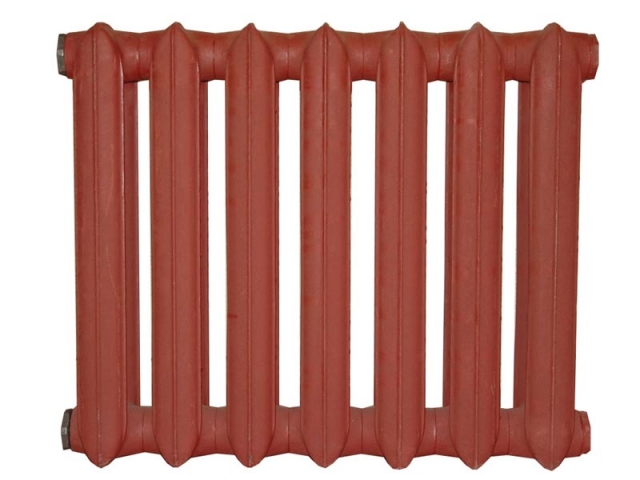
As practice and everyday experience have shown, old-style radiators heat our apartments by convection - they simply heat the air and make it move inside the room. As a result, we get warm dry air that accumulates in the ceiling area and if you visualize it, it will look like a big pillow.
The lower part of the room remains cool, which, if the air temperature is insufficient, causes condensation to form. Also, dust and microbes rise up, which adversely affect our health. To this "bouquet" you can safely add the impossibility of adjustment temperature regime in the apartment with your own hands. As a result, we get harmful and inefficient systems.
Attention! As surveys of the Russian population have shown, even with normal operation centralized heating systems, most would prefer individual (autonomous) heating systems.
Corner apartments - the problem of the country
As for heating radiators in corner apartments, they simply do not cope with the task (this applies not only to old "Soviet" houses, but also to new buildings). The main problem of such a “dwelling” is huge heat loss. That is, the heat received from the radiators leaves through the corner joint, and the cold from the street, in turn, penetrates into the apartment and it becomes terribly cold in it. In winter, frozen walls accumulate moisture on themselves and thus become an excellent “bed” for fungus and mold.
Looking for a solution
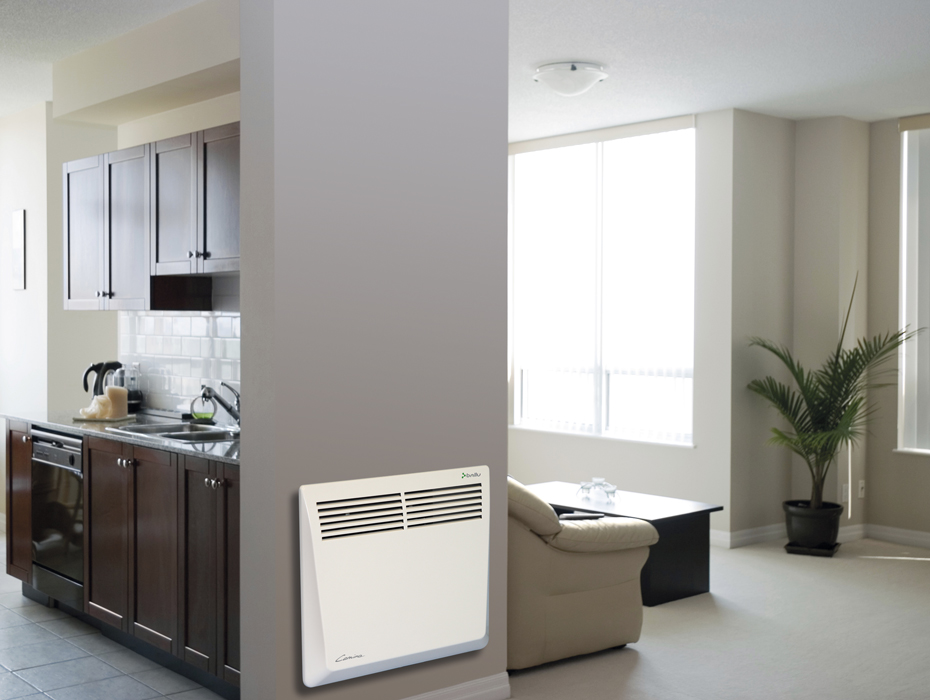
So which heating system is best? Electric heaters can be used as heating devices, but this is a very costly option - the price of utilities from this only increases, and the air does not become more humid.
Heating system
Due to the fact that autonomous heating is almost a "pink dream" of our fellow citizens, let's consider this concept in more detail - what does this mean?
Everything is simple here - autonomous heating systems are both boilers (solid fuel, liquid fuel, gas and electric), and independent heating systems - infrared panels.
I would also like to note, which, thanks to its invisibility, has become a hit of the last decade. But, let's continue in order:
- Solid fuel boilers- have a high level of fire hazard. Solid fuels (firewood, pellets, wood shavings, sawdust, briquettes, etc.) are used to kindle and maintain the flame. Their main advantage is that they are the most economical option in the absence of a nearby gas main. Therefore, if you are still interested in the best heating for a summer residence, the answer is obvious.
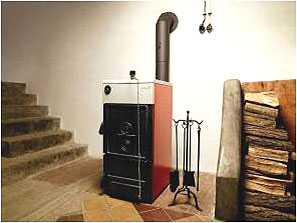
- Fluid systems- mostly work for diesel fuel and represent the "cottage" option. It is simply impossible to install such a system in an apartment - you will have to equip a chimney, the exhaust from which will surely disturb the neighbors. And the level of fire hazard leaves much to be desired.
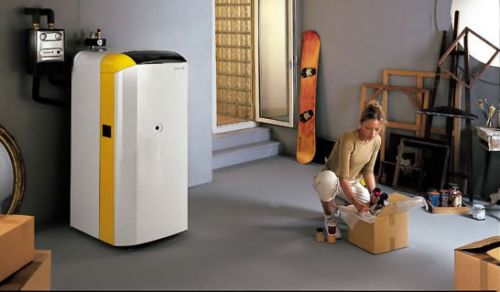
Attention! When arranging liquid fuel boilers, do not forget about a special place for storing fuel (separate from the boiler). In his absence, the fire inspector will veto your system and write out a rather unpleasant fine.
- The most popular and demanded option for modern apartments– . They are economical and allow you to spend "fuel" solely at your discretion and desire. Thanks to special temperature sensors, you will always know the temperature in the rooms and, if desired, adjust it. But there are many questions to be solved here - which boiler model to prefer, how to install a temperature sensor, which heater tap is better ...
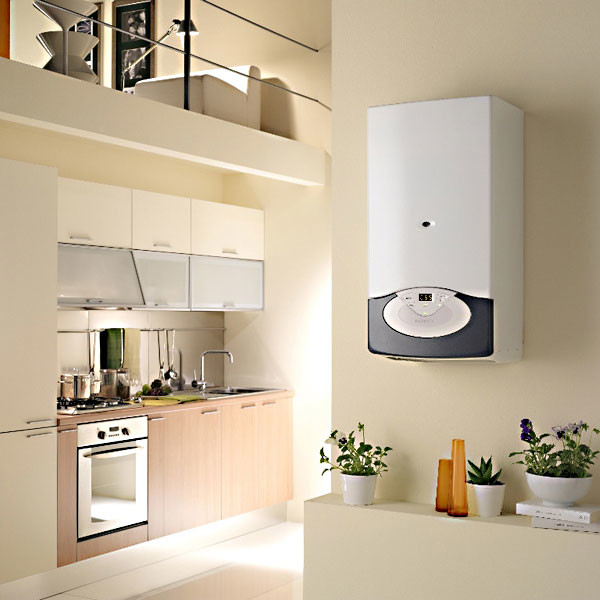
- If it is not possible to bring gas equipment to your apartment, pay attention to the system "warm floor", which operates on the principle of district heating, but is a more economical, reliable and regulated option.
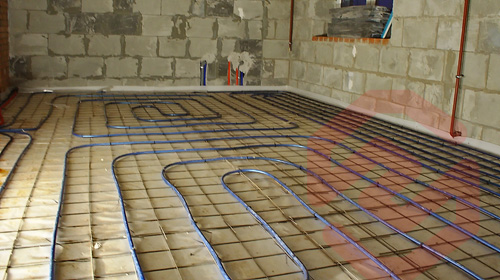
The question immediately arises - what is better for heating metal-plastic or polypropylene? Due to the fact that metal-plastic is more durable, plastic and more resistant to mechanical damage than polypropylene pipes, it is better to use it. Moreover, the floors are mounted in a self-leveling floor and are closed over the floor covering (laminate, linoleum, parquet, etc.). That is, your warm floor will experience a constant (albeit insignificant) load.
Among other things, I would like to note the effectiveness of such a system - the heat rises directly from the floor and warms up not the air, but the furniture. It turns out that all interior elements in the room will participate in heat transfer.
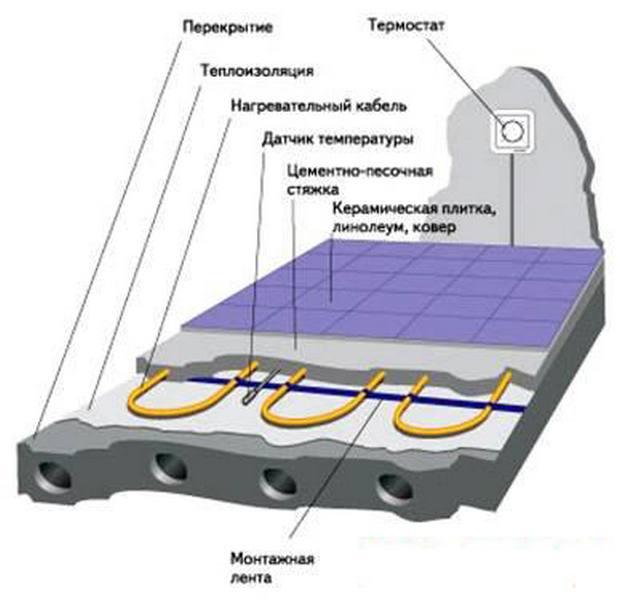
As for the additional advantages, the "warm floor" system has a lot of them - it creates an ideal microclimate, maintains a constant optimum temperature in the room, plus the ability to adjust the temperature and operate the system in automatic mode. Anyone can mount a "warm floor" with their own hands, without resorting to specialists for help. There are instructions on our website on how to do this.
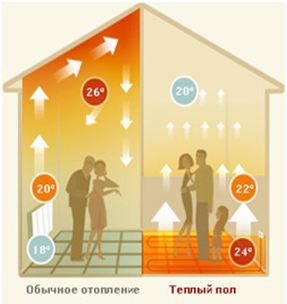
- So we got to infrared heating, which you can talk about for hours. In our country, this phenomenon is new and rarely used due to its "mysteriousness". But meanwhile, I would like to note that this is the least energy-intensive way to warm up your apartment, to which many residents of Scandinavia have switched.
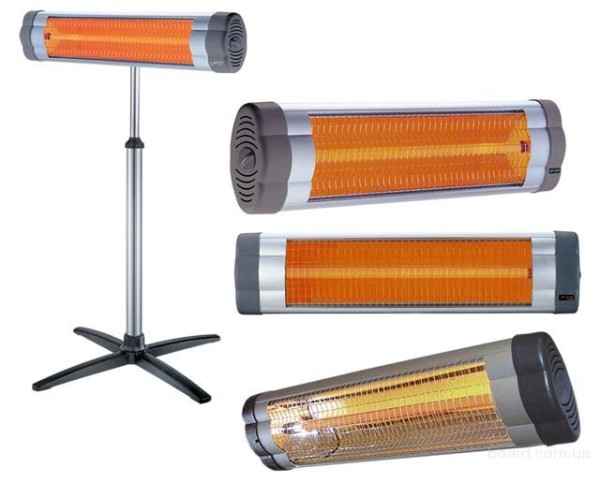
Summarize
You can look for answers to your questions in our photo and video materials. May your home always be warm and cozy!
1.
2.
3.
Apartment owners are often interested in how to calculate the heating in an apartment in order to create comfortable living conditions. Complaints from consumers about poor heating and cold in apartments are a common occurrence. The fact is that utilities only charge for the heating services provided, but never make calculations regarding the level of heating of residential premises.
Those owners of residential real estate who have decided to install an individual heating system and, accordingly, a boiler, should know how the heating in the apartment is considered and how many kilocalories are needed for a comfortable stay in it. In addition, consumers must do everything possible to keep heat indoors.
Types of apartment heating
Today, in residential buildings and apartments, you can use different types heating systems and appliances that are efficient.The most widespread are:
- central heating using a water circuit and radiators;
- floor heating.
- cast iron;
- aluminum;
- become;
- bimetal.
In turn, aluminum radiators are the best solution for autonomous systems, since the pressure in the water circuit is low and this metal has a fairly good heat transfer. Steel and bimetallic heating batteries can be installed both with and with centralized.
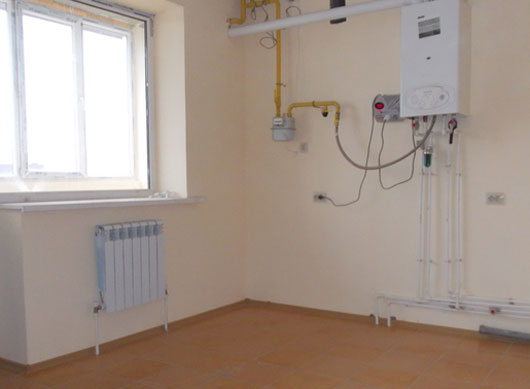
You need to know how to calculate the heating in the apartment correctly so that the calculated indicators are true. After that, you need to qualitatively mount the radiators and arrange them most efficiently and in the right places.
For example, in a room, the battery should be placed under the windows, as a result of which the heat flows, rising up, prevent the penetration of cold air coming from the window panes.
Floor heating. The underfloor heating system is being installed.
How to correctly calculate heating
The procedure for calculating heating in an apartment provides for determining the number of radiators that will be enough to heat each room. The metal of their manufacture is not taken into account. Manufacturers indicate the capacity of each section of the battery in the accompanying documents. You can also find similar information on the Internet.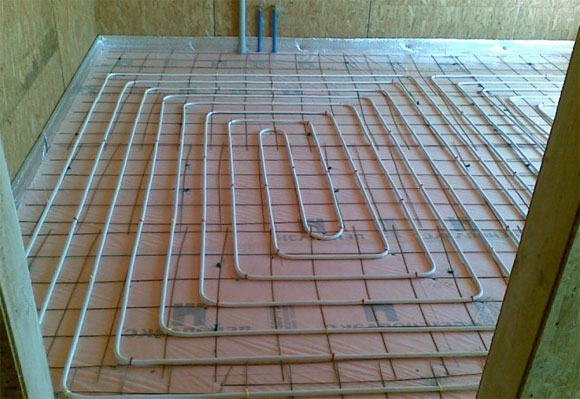
Calculation No. 1. As an example, the article gives an order in an apartment for one room with a ceiling height of 2.7 meters and a wall thickness of at least 60 centimeters. In this case, the letter P denotes the specific power of the battery section, S is the area of \u200b\u200bthe room. The Sx100:P formula allows you to find out the number of sections required for efficient heating. If the room area is 20 "squares", then TM Mirado bimetallic radiators with a power of 185 W will need to be purchased 20x100: 185 = 10.81. When rounded up, it turns out that 11 sections are enough to heat the room.
Calculation No. 2. Now, for example, we have to calculate a panel radiator for a room of the same area. To do this, use the formula P \u003d Vx41, in which P is the total power of the battery, V is the cubic capacity of the room, the number 41 means the number of watts needed to heat the room. V \u003d 20x2.5 \u003d 50 m3. Then we substitute the numbers into the formula P \u003d Vx41 \u003d 50x41 \u003d 2050 W or 21 kW. To calculate the number of sections, the power of the entire radiator is divided by the specific power of the section.
It should be remembered that the number of radiators in a room depends on how many windows there are in it.
How to calculate the heat in the apartment, look at the video:
Calculation of heating system underfloor heating
And how to calculate the heating in an apartment heated by a warm floor system. In this case, it is impossible to accurately select the number of pipes per one "square", since the thickness of the screed installed above the water is of no small importance. heating system. First of all, it is necessary that the power of the boiler or column is not just enough, but there is a reserve.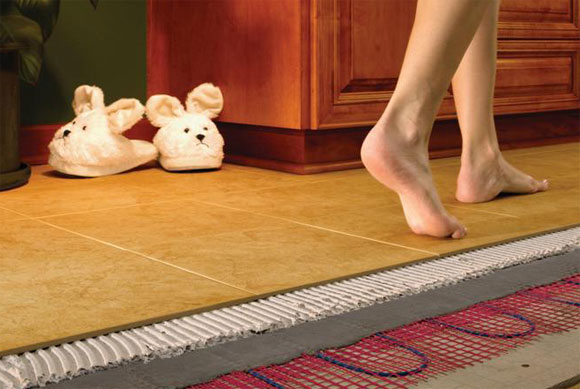
When installing a spiral or snake for a water floor, you should be aware that the heat coming from the pipes does not rise straight up through the screed, but diverges at an angle of 45 degrees. For this reason, a zone corresponding to the magnitude of the angle divergence is heated on the surface of the cement pour. The larger the zone, the thicker the screed.
It is necessary that the thermal lines rising up from the heating pipes intersect on the floor surface, otherwise, a person moving around the room will feel uneven heating. One of the areas of the floor covering will be warm, and the other, located nearby, will be cold.
According to experts, the optimal pipe pitch for installing a warm water floor is 15-20 centimeters with a screed height from the base of 8-10 centimeters. As a result, 5-7 centimeters of solution will be poured over the pipes, provided that there is a plasticizer in the mixture.
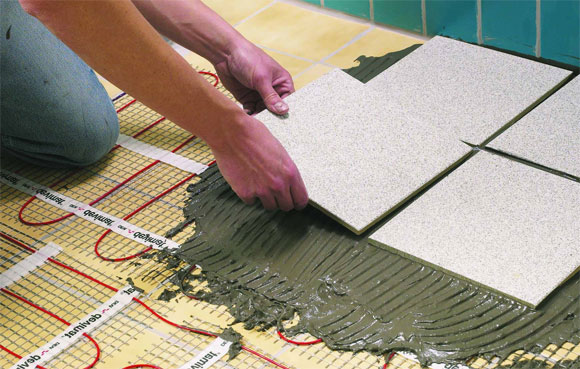
Often, professionals argue that the thickness of the upper screed over the floor water heating system should be at least 14-15 centimeters from the base. They explain that then the cement monolith will never collapse and the heat will be well retained. In this case, the pipe pitch is 25-30 centimeters, and thus the heated water decreases in volume (read also: ""). At the same time, without the use of a plasticizer, it is unlikely that it will be possible to maintain solidity. Also, with a thicker screed, during the pouring process, foil polyethylene foam is placed in one layer between the wall and the cement mortar for cushioning.
As for the statement that heat is better retained with a greater thickness, this is not entirely true, since all this rather large volume must first be heated. Hence the conclusion: the optimal step for installing pipes for space heating should be about 20 centimeters, and the thickness of the screed cannot exceed 19 centimeters.
Thus, the calculations themselves are not difficult, but you need to know how to calculate the heating in the apartment in order for it to be effective.
Autonomous heating of an apartment allows you to refuse from low-quality public services and independently plan your expenses for heating your home. Therefore, every year there are more and more owners of "autonomous cars".
Types of autonomous heating of apartments
Individual heating of the apartment can be:
- gas. Water heated by the boiler is used as a heat carrier;
- electric. Most often, apartments are equipped with underfloor heating. They are easy to use, do not spoil the design of the room.
Very popular with the public gas boilers. But for such equipment it is necessary to obtain permits. The permit is issued by the administrative body on the basis of the following documents:
- statements;
- a document on the ownership of the living space where it is planned to install individual heating.
According to the current legislation, the replacement of heating in the apartment is carried out by the tenant at his own expense. This also applies to the replacement of risers, radiators. Which is often carried out when connected to an autonomous heating source.
Advantages of individual apartment heating
- The owner sets the temperature in the apartment and even in individual rooms at his own discretion. You can also adjust the heating mode depending on the time of day;
- it The best way saving money and resources;
- During the off-season, when the central heating does not work, the autonomy creates comfort;
- The efficiency of modern autonomous heating systems for apartments is very high, so money does not go down the drain;
- The apartment warms up evenly;
- Heating equipment for apartments is very easy to operate.
According to experts, the only drawback of individual apartment heating is the high cost of installation and the difficulty of obtaining documentation. The equipment will not pay for itself in one year. After all, when installing, for example, gas boiler, it is necessary to replace the heating radiators in the apartment. Cast iron have too high inertia - they accumulate heat for a long time, instead of giving it to the room.
Apartment heating price
The cost of heating an apartment is made up of many factors:
- the cost of heating equipment;
- the cost of permits;
- price preparatory work(for warm floors it is necessary to make a special screed);
- the cost of radiators, pipes, valves;
- the cost of installing and running the system.
Thus, the price of heating an apartment can be approximately calculated, having determined at least the type of equipment.
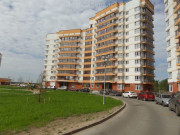 The owners of living space in a new building have a question about whether.
The owners of living space in a new building have a question about whether.
In order to reduce the cost of an apartment in new buildings, they use the most a simple circuit economic option or temporary scheme.
An economical option means a heating scheme that is laid with one pipe in all rooms. Such a system is acceptable, but you need to understand that the farther the radiator is from the beginning of the wiring, the colder it will be in the room in winter.
The temporary scheme is performed in a completely simplified version of polypropylene pipes, which have welded joints along the entire length of the pipes to the radiators. The heating system of an apartment in a new building made of polypropylene pipes is acceptable for open laying pipes along the walls and is completely unacceptable for systems that are planned to be filled with a screed. That is, while repairs are being carried out in the apartment, such a scheme is quite acceptable, but as soon as the question arises of filling the floor with a screed, the question of altering the heating system automatically arises.
In the previous article, we described in detail that there are two options for pipe laying schemes: a two-pipe heating system and a beam system. We will not dwell on these schemes in detail, each of them has its pros and cons, which can be read in detail in our article at the link - what kind of heating is used in new buildings.
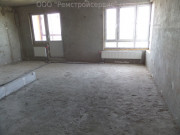 Let's figure it out what is the best heating for apartments in houses in new buildings where there is no centralized common house system - individual heating for apartments in a new building .
Let's figure it out what is the best heating for apartments in houses in new buildings where there is no centralized common house system - individual heating for apartments in a new building .
For apartments in new buildings, it is better to use a collector heating system. The collector system is similar to the beam system, but it differs from the beam system in that the pipelines are not laid along the shortest distance to the radiator, but along the walls.
This allows both the customer and the installers to know where the pipes go, so as not to damage them later, if for some reason it is necessary to open the screed, it will be known where the pipe passes, which allows opening a small area of the screed.
The disadvantages of such a system increase the total pipe consumption by 10-15%, but the advantages are obvious:
1. Convenience of installation of a floor covering;
2. No need for sketches and measurements of pipe laying;
3. Convenient operation of the heating system;
4. Lack of floor connections in the form of tees, which can lead to potential leakage;
5. Allows you to adjust each device independently.
6. Allows the use of any type of radiators, which makes the system universal.
In conclusion, we can say that the collector system is the best heating for apartments in new buildings.





